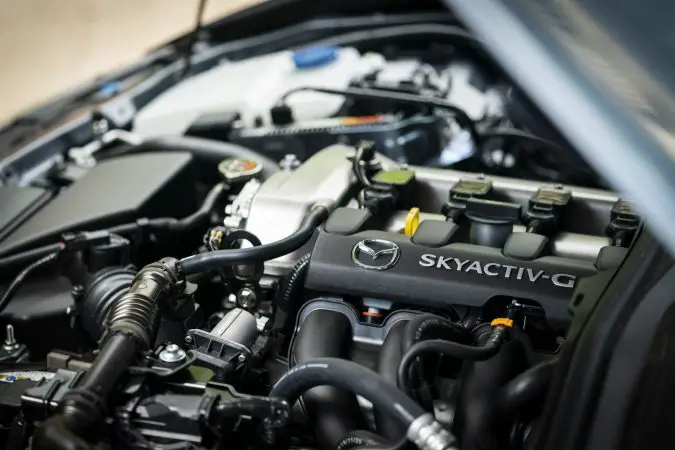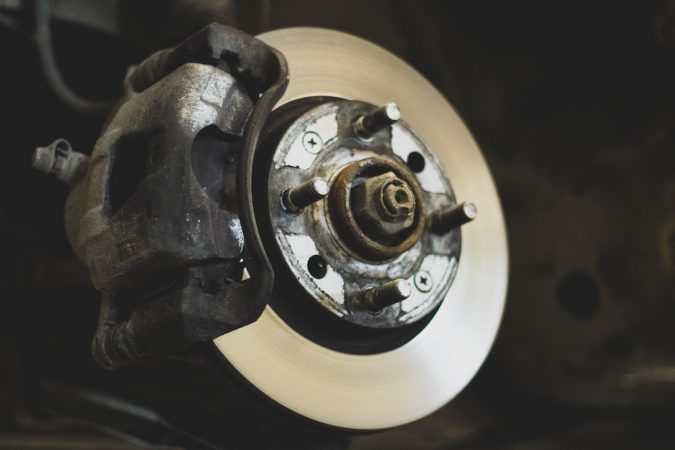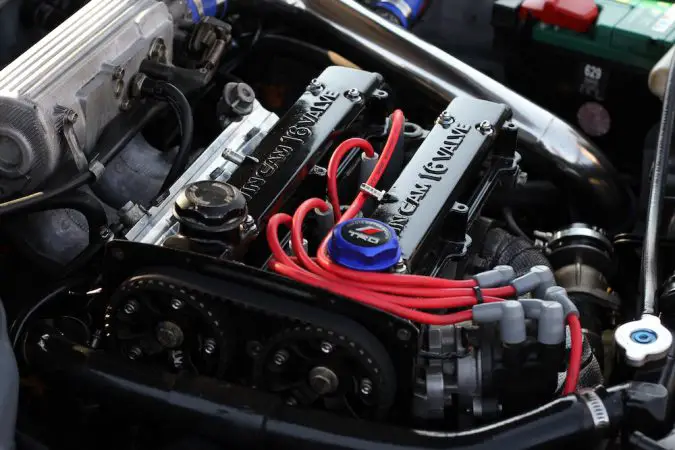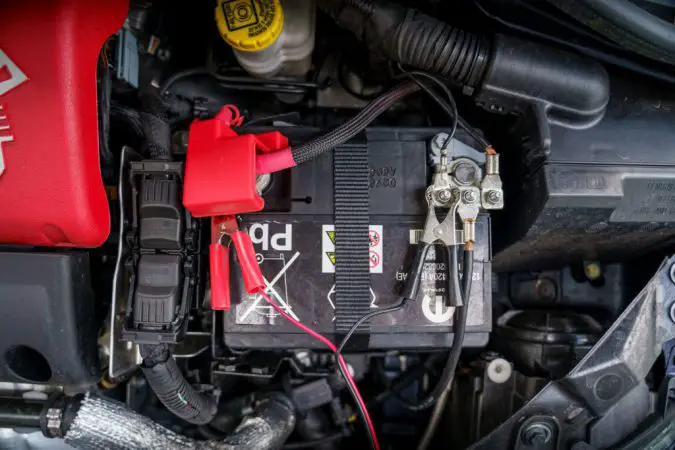Your car is a powerful integration of a bunch of complex components. These components work in perfect harmony to keep the vehicle running. Needless to say, one malfunctioning part is more than enough to impede the normal functionalities of a car. It is important to be familiar with all parts of the car, if not have complete knowledge about each of them.
In this article, we dive deeper into the all necessary automotive components and parts that make a car what it is, explain how they work in brief as well helpful maintenance tips. You do not have to be a gearhead to know this information. Every regular car owner needs to have basic information about the machine they are riding around in.
When you know about all parts of a car, it is easier to take care of your precious ride.
The Most Important Parts Of A Car
Every single part of a vehicle bears significance, but some may just be more important than others. Newer vehicles are much more complex than before and come with more parts that need to be functioning well. Although there are many complicated parts, the majority of them are mainstream so you should know about their existence and usage already.
Below are some of the most commonly referred to car parts, how they work, and how to maintain their good shape for smoother rides.
All Parts Of A Car: Engine
It’s only fair that we start with the engine – the heart of a vehicle. This is the most important part of the vehicle. An engine majorly determines the performance of a car. Moreover, the many parts of the engine as well as the collection of other related components are highly prone to damage from regular wear and tear. Thus, the engine is a no-brainer when it comes to car knowledge.
This highly complicated yet sensitive powerhouse is composed of heads, pistons, blocks, and valves. Modern engines also go by the name “internal combustion engines” as the engine produces power for a car to operate by making an ignition inside its chamber. The inputs in this case are air and fuel in the perfect ratio.
Engines can use a wide variety of fuels, such as:
- Ethanol
- Gasoline
- Diesel
- Electricity
How An Engine Works
Engine cylinders inside an engine block contain pistons. These pistons move up and down, generating energy. The power of an engine increases with the number of cylinders it has, which usually ranges between four, six, and eight.
In a four-stroke engine, the intake valve opens during the intake stroke. As the piston moves downward and displaces the crankshaft along with it, it creates a “vacuum” or suction that pulls in fuel and air, allowing them to enter the combustion chamber. Then, the valve closes. The butterfly throttle is a plate that rotates inside the intake valve and is tasked with deciding how much of the mix is allowed in the combustion chamber.
Once the piston goes to the top of the compression stroke, the air-fuel blend is compressed. The spark plug lights the mixture and generates combustion, making the piston go down on its stroke which ultimately turns the crankshaft. Eventually, the crankshaft plus the transmission rotates the wheels and your car starts moving.
When the piston gets to the bottom of its stroke, it opens the exhaust valves and pushes the exhaust gases outside the cylinder. Engines need regular oil changes to remain lubricated.
All Parts Of A Car: Gear Box (Transmission)
Also called transmission, a gearbox popularly goes by the name “powertrain.” When discussing the importance, it’s second to the engine. The transmission is what generally needs attention when a vehicle fails. A restored transmission breathes new life into a vehicle, no matter how old it may be.
The transmission holds different gears that are needed by the car to shift to when moving at various speeds. When you shift between gears, engine power is shifted to different wheels of the vehicle. Transmission is of two types: manual and automatic.
In the case of a manual transmission, the drive chooses gears through the combination of a clutch pedal and shift lever. On the other hand, for an automatic transmission, the car shifts through gears automatically and the driver only has to choose between reverse and drive (forward).
For obvious reasons, an automatic transmission is more popular and convenient than its manual counterpart. However, there is one big disadvantage: it doesn’t last as long. Moreover, some performance experts believe that you are trading control for convenience in automatic transmissions. Many car enthusiasts would prefer a manual transmission to an automatic one.
All Parts Of A Car: Brakes
The components of a vehicle that push it forward are essential, but so are the parts that make it stop. These two sides work together to help a car move. Next on the list of all parts of a car that can be considered indispensable, is the brake system. Even the smallest failures can lead to serious, often life-threatening accidents.
Has it ever crossed your mind how a light push against the brake pedal can halt a huge rolling machine flat on its tracks? When a driver presses down on a brake pedal, it prompts a hydraulic fluid to course through the wheels of the vehicles via the steel pipes.
The brake system uses the fluid to transmit the force applied by a driver on the brake pedal to a particular clamping force that decreases the speed of the vehicle’s wheels.
A manual braking system needs a driver to intervene to stop. The sensor braking system was invented later and it can sense the need for braking to take action.
How A Braking System Works
Brake rotors, brake pads, and brake calipers are what make up a braking system. Made from iron and steel, brake rotors are metal discs connected to the axles – the parts that make the wheels turn. The brake calipers resemble clams and are in contact with both sides of brake rotors to generate friction when a driver brakes. When a brake pedal is pushed on, the brake calipers attach to both sides of the rotors to reduce the pace of the wheels.
To improve braking efficiency and decrease wear and tear on an otherwise expensive system, brake calipers come with pads. These brake pads are sacrificial by nature and clamp on both sides of the brake rotors to slow them down.
It doesn’t matter if your vehicle has a sensor or manual braking system; maintaining and regularly replacing the malfunctioning parts of a brake system are vital to your car’s health and yours. Common problems with brakes can occur due to cracked pads, rusted calipers that get stuck, water damage, or air logged in the brake lines.
All Parts Of A Car: Steering System
There is so much going on inside every vehicle. It is much more than a simple push on the pedals to get the wheels turning. The two common kinds of car steering systems would be recirculating-ball steering and rack-and-pinion steering. While recirculating-ball steering is a more common practice amongst larger trucks and SUVs, rack-and-pinion steering is mostly common for passenger vehicles.
How A Steering System Works
Interesting fact: when you turn your car, the front wheels do not point in the same direction. For a vehicle to make a smooth turn, every wheel has to follow a separate circle. The inner wheel has to follow a circle that has a smaller radius – in other words, it makes tighter rotations than the outer wheel. It is the job of the steering system to ensure that the inner wheel is turning more than the outer one.
All Parts Of A Car: Steering Ratio
The steering ratio is the ratio between how far you rotate the steering wheel to the length to which the wheels turn. For example, if a complete revolution (360°) of the steering wheel makes the wheels of the vehicle turn 30°, the steering ratio is 360°÷30° = 12:1.
Usually, the steering ratio on sports cars is lower. It allows them a quicker response time so you do not have to turn the wheels as much to get them to traverse a certain distance. Moreover, smaller cars are light by themselves so even when the ratio is lower, you will not have to steer as hard to move the car. Check out this simplified video here.
All Parts Of A Car: Suspension
After the steering system, we have to talk about the suspension in our rundown of all parts of a car that classify as basic. A suspension is extremely important in any vehicle: maximizing the friction between the road surface and the tires. Thus, it provides steering stability and ensures a comfier, smoother ride.
There is not much need for car suspensions on a flat surface. But, when you are traveling over rough terrain, you may not be able to handle or drive the car properly. When the wheels run over a bump on the terrain, the car’s wheels will move up and down and break the contact between the road surface and the vehicle. The suspension system absorbs the vertical pressure of the wheel, dealing with these shocks.
With the vertical force reduced, the wheels roll with horizontal force. Therefore, the frame and body of the car can ride undisturbed.
All Parts Of A Car: Chassis
The frame of the car which holds and supports all parts of a car is termed the chassis. If we consider the engine to be the heart of the vehicle, the chassis can be the skeleton. It keeps the car tensile and stiff while ensuring low noise and vibration ripping through the entire vehicle.
Car chassis is normally constructed of light steel or other rigid materials like aluminum. Most modern-day vehicles feature steel-plated chassis since they guarantee durability and strength.
All Parts Of A Car: Cooling System
Over the years gas-powered engines have received substantial upgrades. However, they are still not the very best at turning chemical energy into mechanical power. Around 70% of the energy gasoline contains is turned into heat, which also means that the engine and similar components under the hood can overheat.
Without the cooling system, these parts will overheat, malfunction, and fail.
The cooling system handles the excessive heat. Interestingly enough, for a car moving down the highway, its cooling system will dispel enough heat to warm 2 average-sized houses.
But oh, there’s more! The engine operates best at fairly high temperatures. If an engine is cold, the components sustain damage due to wear and tear faster and the engine is less efficient. Furthermore, it emits more waste. Another essential job of the cooling system is to let the engine heat up as fast as possible and then maintain the optimum temperature that is safe.
There are two kinds of car cooling systems: air-cooled and liquid-cooled.
Types Of Car Cooling Systems
Now, let’s look at the types of car cooling systems. We’ve got liquid and air cooling installed in different models.
1. Liquid Cooling
A liquid-cooled system circulates a fluid, called a coolant, through pipes and passageways in the engine. As the coolant passes through the hot engine, it absorbs heat and thus cooling down the engine. After the fluid leaves the engine, it passes through the radiator, or a heat exchanger, which transfers the coolant’s heat to the air blowing through the radiator.
2. Air Cooling
Some older cars, and very few modern cars, are air-cooled. In this type of cooling system, the engine block is covered in aluminum fins that conduct the heat away from the cylinder. A powerful fan blows over these fins, getting rid of the heat.
How A Cooling System Works
Coolants have a high boiling point, a really low freezing point (and to learn more about automotive fluid freezing points, check out our write-up on does oil freeze), and a higher capacity to hold heat. It is a mixture of water and ethylene glycol as ethylene glycol raises the freezing and boiling points of water. Moreover, a cooling system relies on pressure to increase the boiling point of the coolant even more.
1. Radiator
A radiator transfers heat from the warm coolant that passes it to the air blown through by the fan. In summary, it is a heat exchanger.
2. Thermostat
The primary task of the thermostat is to let the engine heat up quickly and maintain a constant temperature in that region. This is essential to the performance and lifespan of the engine. Thermostats regulate the amount of water that passes through the radiator.
3. Fan
Similar to the thermostat, a cooling fan must be controlled so that it lets the engine maintain a specific temperature. Either the engine computer or a thermostatic switch would control the fan. It is set to turn on when the coolant’s temperature shoots above a set point. Once the temperature dips below that point, the fan automatically turns off.
All Parts Of A Car: Charging System
The charging system of a car includes the battery and the alternator – two components that serve to start the engine. Starting issues such as slow cranking, slow start, or no start at all are caused by a failing alternator or battery.
1. Battery
The battery is a critical part that gets the car going. This rechargeable component delivers electrical current to the motor and its main purpose is to supply energy to the starter.
A good or bad battery will decide the operational status of your vehicle. To decrease your chances of failure, test your car’s battery with a multimeter at regular intervals to make sure it is running fine – twice a year at the very least. Testing the battery helps you decide whether the reason behind slow-starting is a failed battery or not.
You can consider a battery fully charged when it has 12.6 volts or above in it. If a battery drops to 12.2, the charge status is only 50%. Anything under 12 volts means the battery is “dead” and has to be replaced. If you are facing trouble starting your vehicle or can tell that something is wrong with it, chances are, the battery is acting up. Get it checked as soon as possible instead of waiting for the car to display signs of weakness.
If you want to jump-start your car, you have to connect the black clamp of the jumper cable to the (-) cable and the red clamp to the (+) symbol.
2. Alternator
The alternator generates electricity from the mechanical energy of the car. This electrical energy is used to run different electrical parts like conditioning units, lights, and to charge the battery. If you hear your mechanic bring up the phrase “charging-system problems,” they are discussing the alternator.
The alternator has a serpentine belt or alternator belt which receives the mechanical energy of the engine. This belt is wrapped around one or multiple pulleys which is/are connected to the alternator. The opposite end of the pulley twists around the crankshaft. As a result, the alternator and crankshaft can turn together thanks to the alternator pulley.
If the alternator is functioning fine, the service life of your car’s battery is optimized. Undercharged or overcharged, the battery life is shortened.
Will a car still function with a bad alternator?
It will, technically, but only for a short while. As in this state, the vehicle is using the power restricted to its battery, it will not be able to run for too long. Many other parts of the car actively consume power too: brake lights, headlights, engine control unit (ECU), interior lights, and more.
In short, no. A car with poor electrical power does not contain enough “sustenance” to feed the many important components to function to make the car move. If the alternator comes down with a problem on the road, particularly during a long drive, passenger safety jumps out the window. Make sure to test the battery and alternator at regular intervals – about every four to six months.
All Parts Of A Car: Electrical System
The electrical system is one of the most important parts of a car. The primary component of an electrical system is the computer and the ignition system.
1. Ignition Systems
An ignition system is probably one of the most underrated mentions out of all parts of a car, yet it is certainly one of the most important ones. It minimizes pollution while maximizing engine power.
The ignition system must work in perfect sync with the engine. Its goal is to light the fuel at the right time for usable combustion because this is when the pressure in the cylinder is maximized. To get the most out of the fuel, the spark should happen before the piston gets to the top of the compression stroke, so when the piston goes into its power stroke, the highest level of pressure has been achieved.
When the key is turned once, the battery is powered up, allowing the electrical parts inside to run. Turn the key twice and you link the spark plugs in the engine to the ignition coil and battery. In the event of the ignition system fires at the wrong time, not enough power can be made by the engine.
Decreased engine efficiency negatively impacts the mileage. The engine produces more emissions too. There are three key components of a spark plug:
- A spark plug. It ignites the fuel and air mixture,
- An ignition coil. This induction coil transforms the low voltage of the battery to thousands of volts required to generate an electric spark in the plugs to combust the fuel,
- A distributor. It disburses the high voltage to the correct cylinder from the coil (done by the rotor and cap).
2. Computers
Did you know that you are riding around on a huge computer? Today’s cars may have up to 50 microprocessors fitted in them!
The first is the engine control unit or ECU, the strongest automotive computer. The ECU is responsible for producing the lowest emissions at better mileage and usually controlling a range of other car parts and their works by collecting information from many different sensors.
With this information, it constantly does millions of calculations to determine how each part has to perform and where to make alterations in a timely fashion when there is a minor deviation in the system.
If there is an issue with any component of the engine, the ECU will get to it immediately and make it obvious to you. For instance, when you mistakenly pour oxidized gasoline down your car. The ECU reads this like too much air condition or a “lean burn.” This is not an optimal situation for the engine since a combustion engine needs a precise ratio of air to fuel to operate.
Facts about Vehicle Parts and Systems:
- The internal combustion engine is the heart and soul of a vehicle, and it includes parts such as the timing chain, camshaft, crankshaft, spark plugs, cylinder heads, valves, and pistons.
- The transmission is a gearbox that uses the engine’s torque to power the vehicle and is made up of gears and gear trains.
- The battery is responsible for providing the electricity needed to run a vehicle’s electrical components.
- The alternator charges the battery and powers the electrical system while the car is running.
- The radiator helps keep the engine cool by removing heat from the coolant before it is pumped back through the engine.
- The front axle is where the front wheel hubs are attached and are part of the suspension system.
- The front steering and suspension systems include shocks/struts, ball joints, tie rod ends, rack and pinion steering, and idler/pitman arms.
- Brakes are found on all four wheels and are essential safety systems. They may be disc brakes or drum brakes with brake shoes and wheel cylinders.
- The catalytic converter controls emissions from a vehicle by transforming harmful gases and pollutants into less harmful emissions before they leave the exhaust system.
- The muffler reduces or muffles the sound produced by the exhaust system.
- The tailpipe carries exhaust fumes from the muffler to outside the vehicle.
- The fuel tank holds the gasoline that powers the vehicle and is typically located before the rear axle to avoid areas that could crumple in a crash.
- The rear axle is where the rear wheels are mounted and is a key part of the suspension system.
- The rear suspension system, made up of shocks, coil springs, ball joints, control arms, and CV joints, contributes to the handling and ride quality of the vehicle.
Conclusion
Although seemingly difficult, understanding and remembering all parts of a car (at least the important ones) goes a long way in ensuring your safety and vehicle’s longevity. Learn to differentiate between normal and abnormal behavior to detect symptoms of failure early on, diagnose and repair them, and save costs.






